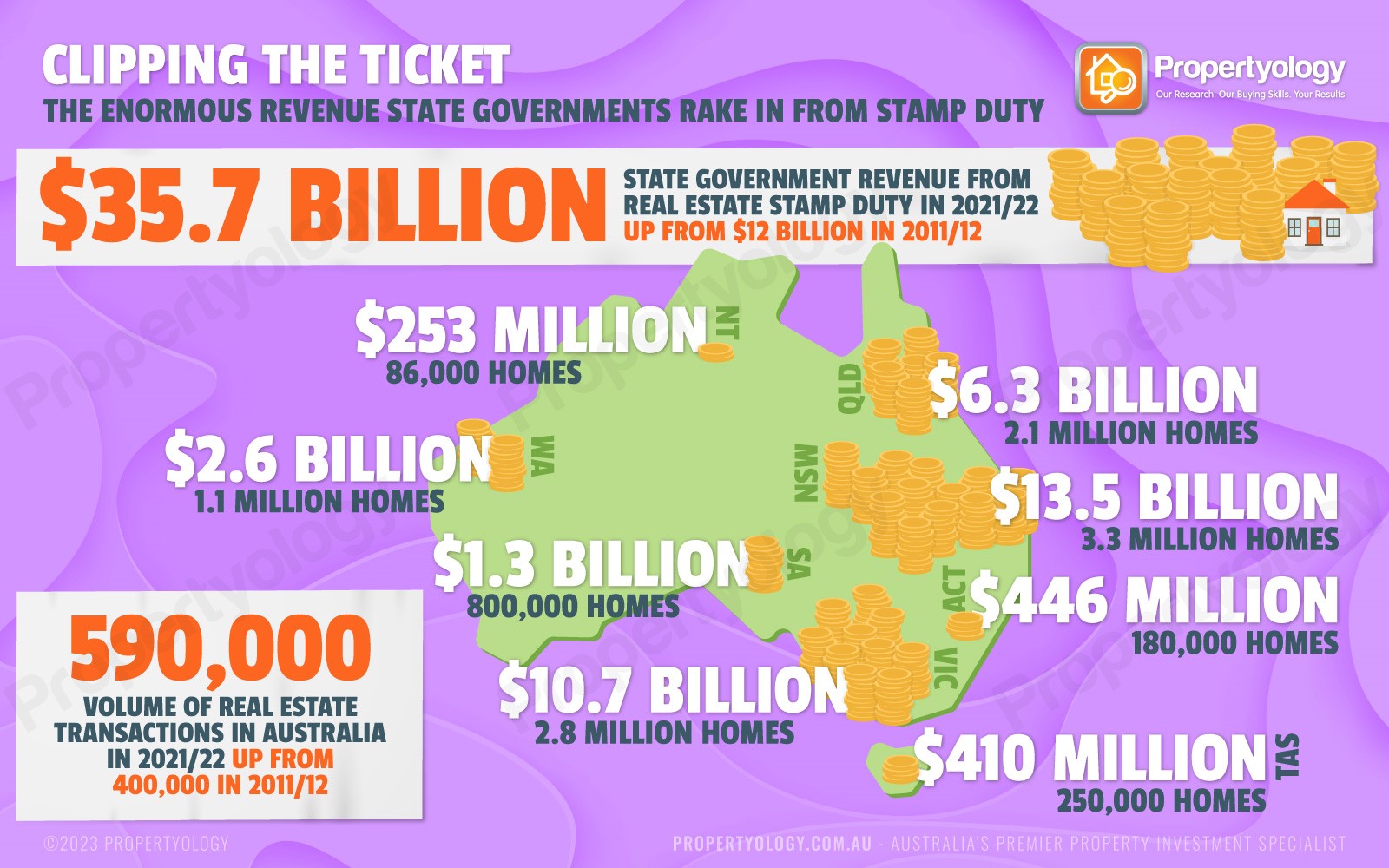

A senior property expert has proposed that stamp duty should be replaced with an annual 3% housing levy paid by working Australians.
Simon Pressley (pictured above), head of research at buyer’s agency Propertyology, called the current stamp duty model a “draconian dream destroyer”, which took too much money from so few people while locking out millions from buying property.
“I’m proposing to remove the biggest blockage from the system – state governments charging less than 5% of households with a $35 billion tax,” said Pressley.
“Stamp duty in every state and territory should be replaced with a significantly more efficient, Medicare-style housing levy paid by everyone in the workforce aged 20 to 60.”
It comes as no surprise to many that Australia has a housing crisis.
Faced with recent rises in rates and inflation and the current cost of living spiralling out of control, the Australian government has stepped in to propose a housing plan that hopes to build 1.2 million homes in a five-year period.
Critics have called out slow processes in building approvals and a lack of incentives needed to supply the demand.
However, Pressley said every generation had faced various forms of challenges in Australia, from housing affordability and rental supply to mobility restraints as household needs changed at different stages of their lives.
Contrary to what a large portion of commentators suggest, Pressley said construction was far from the biggest problem. Instead, Australia’s housing system was “locked up” by a series of “poor policies”.
“Collectively, these policies make it unnecessarily difficult for first home buyers, for people who need to buy a bigger home for their growing family, for others who wish to upgrade to a nicer home, for aspirants who are motivated to invest in their future and for those who depend on rental accommodation,” Pressley said.
First introduced by the NSW government in 1865, stamp duty is a tax charged by state and territory governments on property purchases.
It was first designed as a handling fee to compensate for recordkeeping as the government developed a system that protected the integrity of real estate ownership through an official government stamp.
As the population and homeownership increased, government revenue generated from the handling fee quickly became a valuable stream of income and by 1923 all six states had their own stamp duty policies.
However, in the early 20th century, the rate of stamp duty was relatively low, at around 1% of the purchase price of the property.
Fast forward 100 years and stamp duty is each state and territory government’s greatest source of revenue, raking in $35.67 billion in the 2022 financial year.
For perspective, said Pressley, what was raised in just one year from clipping real estate tickets was equivalent to what it cost to develop 100-years of airport infrastructure for Australia’s 10 largest cities.
“What started out 158 years ago as a small handling fee to cover the cost of administering a simple record-keeping task has become a toxic addiction that is a government version of opioids.”

While the rate of stamp duty varies from state to state, it is typically now around 5% of the purchase price of the property. For example, if you buy a house in NSW for $1 million, you will pay $50,000 in stamp duty.
Part of the problem is that it’s a regressive tax, meaning that it falls disproportionately on lower-income earners.
With the median dwelling price being $740,000 in Australia, households are expected to lay down $74,000 for a 10% deposit – and then pay stamp duty on top of that.
This dream is made even harder in an environment of rising rates and increased cost-of-living pressures.
When a household needs to buy a bigger house to support their growing family, want to trade up to a nicer home, or invest in property, stamp duty can often cost $50,000 to $80,000.
“No government who truly cares about the changing housing needs at different stages of people’s lives would try to justify charging more than a few hundred dollars to cover their administration costs,” Pressley said.
Pressley said based on the last 20 years, approximately 500,000 real estate transactions occur each year in Australia – about 5% of all households.
Even during the record low interest rate period where the government injected a liberal amount of stimulus measures, the record was only 590,000.
“Such a low rate of housing turnover is reflective of the enormous barrier created by stamp duty.”
Perhaps the biggest problem with stamp duty is that the system is designed for it to only get worse.
With 80% of the nation’s 26 million people residing in the 33 largest townships, the price of an entry-level property in 20 of those townships is currently between $700,000 and $1.2 million.
Pressley said on the balance of probability, that range will widen to $2.1 million to $3.5 million in 20 years’ time.
“Twenty years from now, Australians will be expected to find between $100,000 and $200,000 to cover stamp duty. And the total annual cost will exceed $200 billion,” Pressley said. “For every year this goes on, millions of household dreams get squashed.”
There are a number of strong arguments against stamp duty in Australia. Perhaps the one that has been gathering the most steam in recent years was to phase out stamp duty in exchange for a land tax.
Proposed in different degrees in NSW and Victoria, land tax would replace the current lump sum on those who buy real estate with an annual land tax on everyone who owns real estate.
However, Pressley was not in favour of a land tax as doing so is “akin to replacing heroin with cocaine”.
“I would rather see 100% of Australia’s workforce paying a Medicare-style housing levy,” said Pressley.
With the current national annual wage bill exceeding $1.1 trillion, Pressley’s reasoning is that a 3% housing levy imposed on everyone in the workforce equates to $33 billion.
“Instead of raising $35 billion per year from charging less than 5% of Australian households with a $30,000 to $80,000 handling fee, it would be more sustainable to charge 11.5 million households an annual levy of say 3% of their gross income, similar to the Medicare levy,” Pressley said.
“Spreading such a big load will remove a huge barrier and create a pathway for significantly higher rates of housing participation. Without the imposition of an enormous upfront lump sum, more young people will be able to acquire their first home sooner and with a smaller mortgage.”
Pressley said the proposal would see improved household mobility rates.
“Growing families, lifestyle upgrades, and relocations for career opportunities will all be winners,” Pressley said. “Tenants will benefit from having a bigger rental pool to choose from, and society will broadly benefit from a lesser amount of taxpayer funds used to pay aged pensions.”
